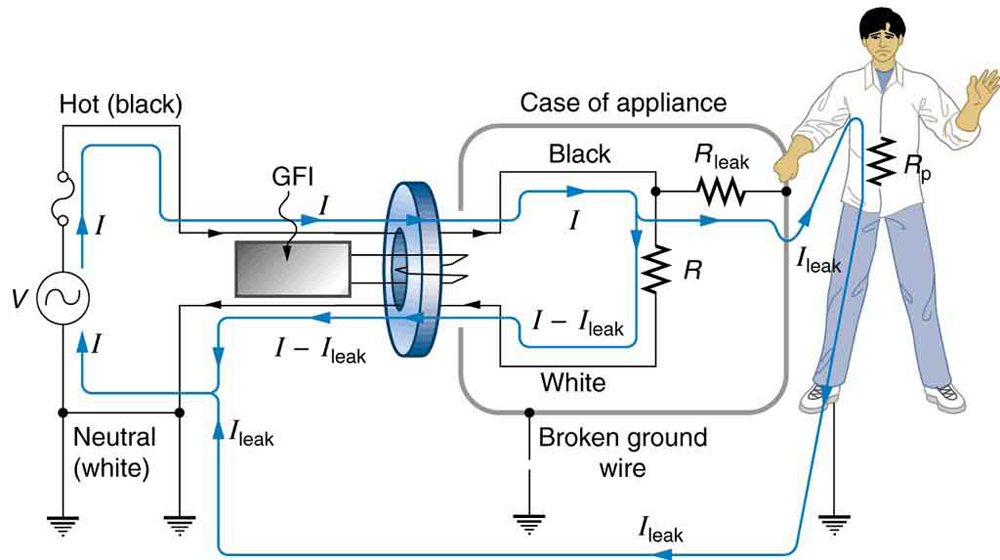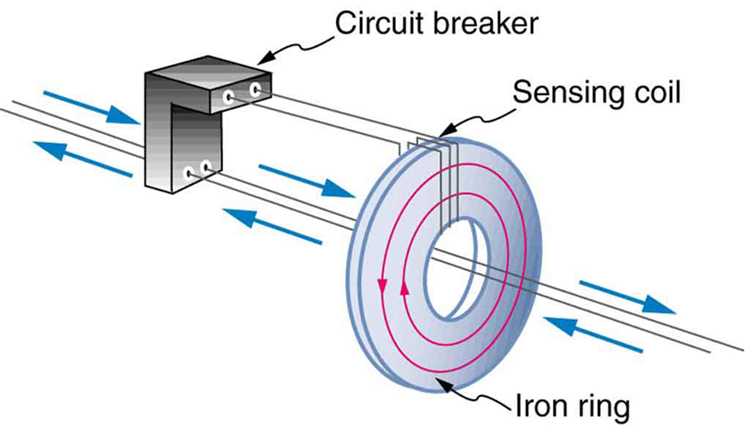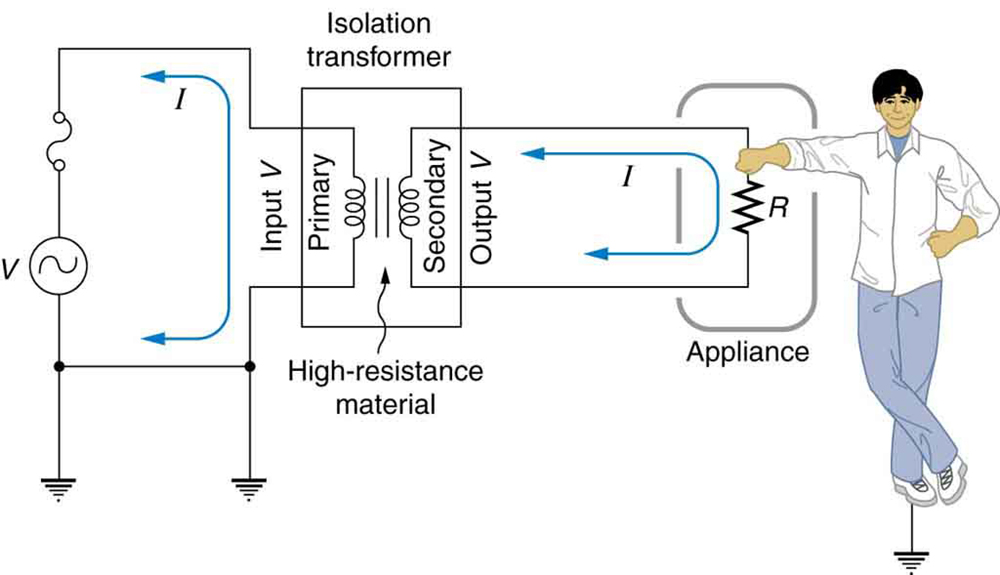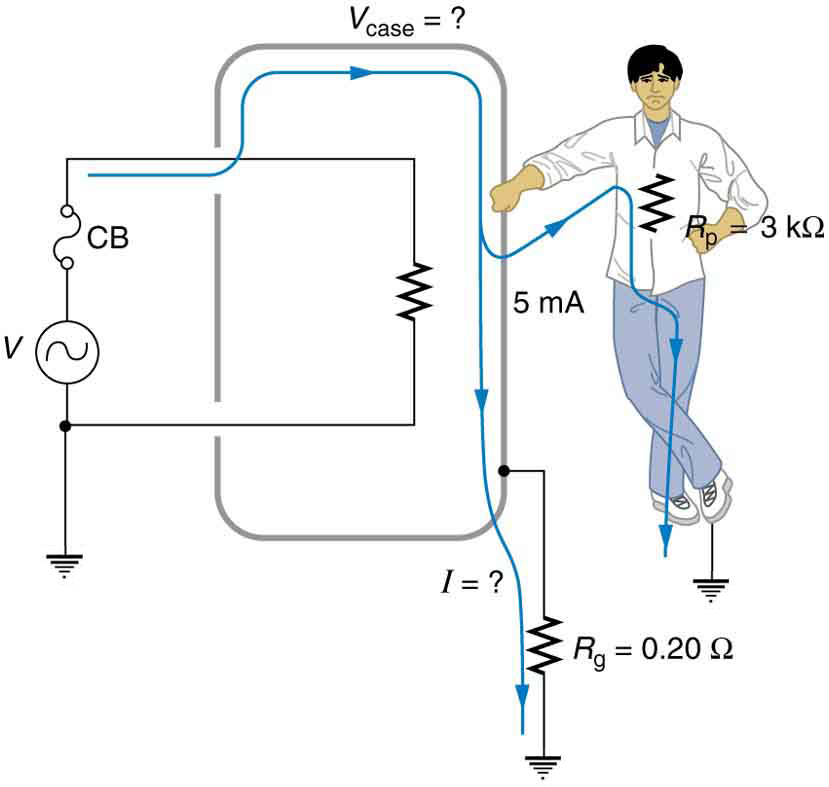| << Chapter < Page | Chapter >> Page > |

[link] shows how a GFI works. If the currents in the live/hot and neutral wires are equal, then they induce equal and opposite emfs in the coil. If not, then the circuit breaker will trip.

Another induction-based safety device is the isolation transformer , shown in [link] . Most isolation transformers have equal input and output voltages. Their function is to put a large resistance between the original voltage source and the device being operated. This prevents a complete circuit between them, even in the circumstance shown. There is a complete circuit through the appliance. But there is not a complete circuit for current to flow through the person in the figure, who is touching only one of the transformer’s output wires, and neither output wire is grounded. The appliance is isolated from the original voltage source by the high resistance of the material between the transformer coils, hence the name isolation transformer. For current to flow through the person, it must pass through the high-resistance material between the coils, through the wire, the person, and back through the earth—a path with such a large resistance that the current is negligible.

The basics of electrical safety presented here help prevent many electrical hazards. Electrical safety can be pursued to greater depths. There are, for example, problems related to different earth/ground connections for appliances in close proximity. Many other examples are found in hospitals. Microshock-sensitive patients, for instance, require special protection. For these people, currents as low as 0.1 mA may cause ventricular fibrillation. The interested reader can use the material presented here as a basis for further study.
Which of the following statements is true for an isolation transformer?
(c)
Explain the working of a ground fault interrupter (GFI).
Does plastic insulation on live/hot wires prevent shock hazards, thermal hazards, or both?
Why are ordinary circuit breakers and fuses ineffective in preventing shocks?
A GFI may trip just because the live/hot and neutral wires connected to it are significantly different in length. Explain why.
Integrated Concepts
A short circuit to the grounded metal case of an appliance occurs as shown in [link] . The person touching the case is wet and only has a resistance to earth/ground. (a) What is the voltage on the case if 5.00 mA flows through the person? (b) What is the current in the short circuit if the resistance of the earth/ground wire is ? (c) Will this trigger the 20.0 A circuit breaker supplying the appliance?

(a) 15.0 V
(b) 75.0 A
(c) yes

Notification Switch
Would you like to follow the 'College physics for ap® courses' conversation and receive update notifications?